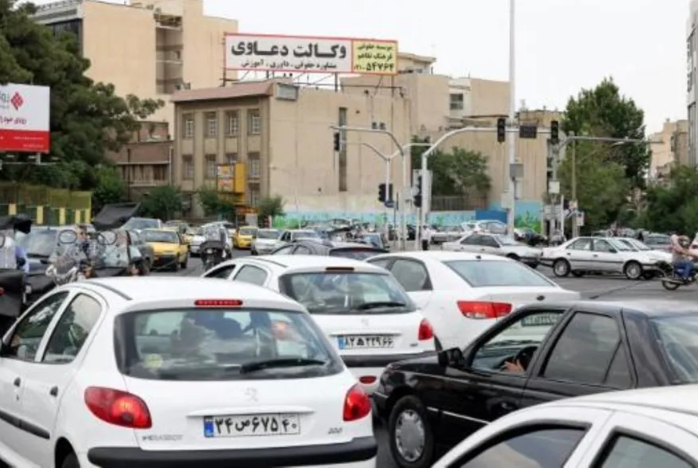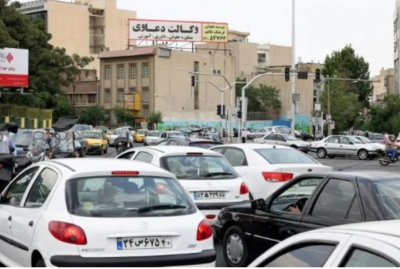On Monday, protesters shouted "political" slogans criticizing authorities during a gathering in central Tehran in response to ongoing electricity outages experienced in various Iranian regions for weeks. This move followed protests over water shortages that have plagued areas in the southwest of the country for more than ten days, where at least four people were reportedly killed, according to Iranian media.
Official state television reported on its website "IRIB News" that a "limited gathering" took place on Jomhouri Street in the capital shortly before noon. It explained that the protest was initiated by "a number of shop owners in the Aladdin and Charsoo centers, expressing their grievances about problems resulting from power outages," but "a group attempted to exploit the discontent and turn [the gathering] political," and "began chanting slogans that are contrary to standards." Iranian media often use the phrase "contrary to standards" to refer to chants criticizing the authorities of the Islamic Republic.
A video published by the Iranian news agency "Fars," close to hardline conservatives, showed a gathering of what it described as "about 50 people," some of whom chanted "political slogans." The footage depicted individuals walking in the street with their hands raised in the air, while police officers, some on motorcycles, were present nearby.
While some called on the police to "support us," others, as shown in the video, chanted slogans such as "Neither Gaza nor Lebanon, my life is for Iran," implicitly criticizing Tehran's support for Hezbollah and Palestinian factions in the Gaza Strip that is besieged by Israel, the Islamic Republic's arch-rival.
ISNA news agency quoted Tehran's Deputy Governor Hamid Reza Koodarzi stating that the protest lasted about an hour before things returned to "normal." By around 4 PM, a reporter from AFP noted the presence of police vehicles and motorcycles near the commercial centers, with normal traffic and electricity supply at the Aladdin center.
"Inefficient Consumption"
Since early July, Iranian authorities have been scheduling power outages in Tehran and several major cities, citing several reasons, primarily increased demand due to rising temperatures during the summer and drought resulting from low rainfall this year, affecting production capacity in hydroelectric facilities. While power outages in Tehran have decreased in the past days compared to earlier in the month, authorities still announce scheduled outages, expecting them to continue at least until the end of the month, urging residents to conserve energy as much as possible.
A spokesperson for the national electricity company stated, according to Fars, that the power cuts at the "Aladdin" center were previously reported and were due to "excessive consumption" of electricity there. Aladdin and Charsoo, located in the heart of the capital, are among the prominent centers specializing in technological products and smartphones in Tehran.
Water scarcity has triggered protests in several areas of Khuzestan province, rich in oil in southwest Iran, starting from July 15. Iranian media reported the deaths of at least three people, including a police officer and a protester, in Khuzestan since then. Official television also reported the death of a person during "rioting" in Lorestan province (west), hinting that these were related to the protests in Khuzestan.
While Iranian officials accuse "opportunists" and "disturbers of the peace" of firing at demonstrators and security personnel, international human rights organizations stated on Friday that security forces used "excessive force" against protesters, and the death toll is higher than official figures.
Supreme Leader Ayatollah Ali Khamenei called on Friday for the people of Khuzestan not to provide "excuses" for Iran's enemies, emphasizing that they cannot be "blamed" for expressing displeasure over this "problem."
In recent years, various regions in Iran have seen protests over living and economic conditions largely attributed to severe U.S. sanctions. These conditions have been exacerbated by the impacts of the COVID-19 pandemic, with Iran being one of the most affected countries in the Middle East.
On Monday, the Health Ministry reported 31,814 infections in the last 24 hours, marking the second record daily tally within less than a week. Additionally, 322 people died in recent hours, raising the official pandemic death toll to 89,122 out of 3,723,246 infections, noting that Iranian officials had previously acknowledged that official figures remain below the actual numbers.




